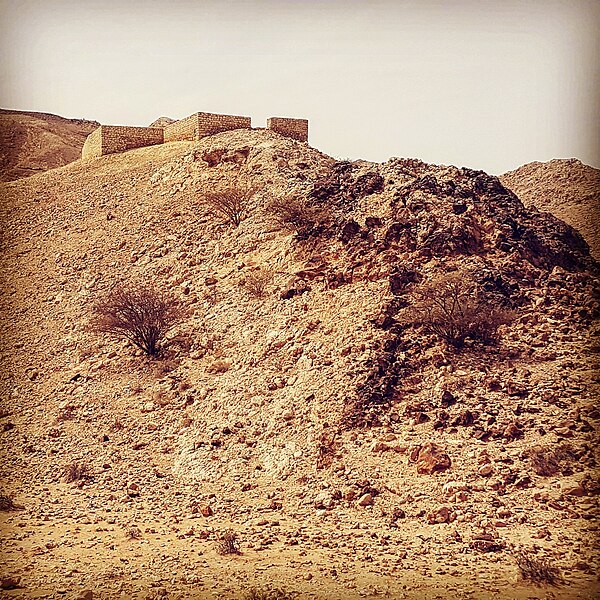Jebel Buhais or Jebel Al-Buhais is a geological feature, an extensive rocky outcrop, as well as an archaeological site located near Madam in the central region of the Emirate of Sharjah, the UAE, about 48 kilometres southeast of the city of Sharjah. The area contains an extensive necropolis, consisting of burial sites spanning the Stone, Bronze, Iron and Hellenistic ages of human settlement in the UAE. Burials at Jebel Buhais date back to the 5th Millennium BCE. The site is located to the side of a limestone outcrop rising to some 340 metres above sea level and which runs almost contiguously from the town of Madam north to the town of Mleiha, itself an important archaeological site.
The Iron Age fort at the core of the necropolis of Jebel Buhais, first discovered in 1973 by Iraqi archaeologists
One of many tombs scattered across the archaeological site
Many of the tombs found by archaeologists at Jebel Al-Buhais are now covered and fenced
Burial BHS 72 at Jebel Al-Buhais - many of the minor finds are unprotected and their identifying plaques have worn and are often hard if not impossible to read. Access to the area is difficult as there are no well defined roadways or tracks.
Al Madam is an inland town of the Emirate of Sharjah, the UAE. Located at the intersection of the Dubai-Hatta (E44) and Mleiha-Shwaib (E55) roads, its development has mainly centred around these road links and the road traffic through Hatta to Oman. The volume of traffic to Oman through Madam and Hatta has lessened since the closure of the 'soft' Omani border at Mahda in 2016, although traffic volumes remain at some 5,000 travellers daily. The road from Madam to Hatta is now only open to UAE or Omani nationals and permit holders.
The "old town" or "ghost town" in Al-Madam





